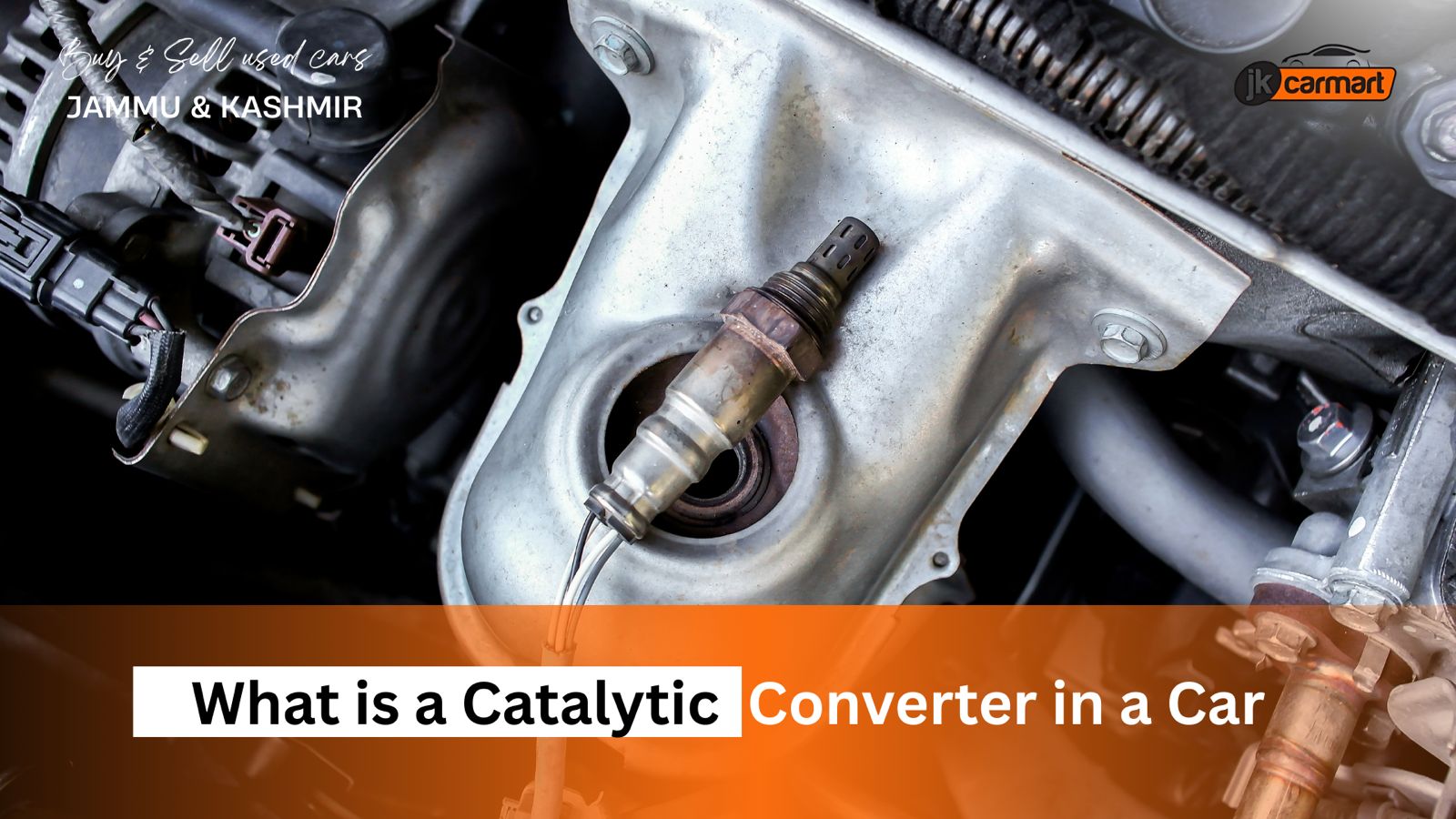Introduction
Have you ever wondered what happens to all those gases coming out of your car’s exhaust? Under the car, there is a tiny device that purifies the gases before it is emitted into the environment. This device is called the catalytic converter.
This device helps to reduce air pollution caused by cars in your city. It keeps a lot of toxic stuff from reaching the air we all breathe. In this blog, we will discuss how a catalytic converter works as an air purifier.
What is a Catalytic Converter?
A catalytic converter is basically your car’s built-in air filter, but for the stuff coming out of the exhaust. Its job is to take all the toxic gases from the engine and turn them into something a little less harmful.
When fuel burns, it releases carbon monoxide, nitrogen oxides, and bits of unburned fuel. If nothing filtered them out, we’d all be breathing dirtier air.
That’s where the catalytic converter steps in. It changes those toxic fumes into safer gases like carbon dioxide and water vapour, which do much less damage to the environment.
| Pollutant | What it becomes |
| Carbon monoxide (CO) | Carbon dioxide (CO₂) |
| Nitrogen oxides (NOx) | Nitrogen (N₂) + Oxygen (O₂) |
| Unburned hydrocarbons (HC) | Carbon dioxide (CO₂) + Water (H₂O) |
Also Read: Your Guide to Buying a Used Toyota Urban Cruiser
How Catalytic Converters Work
A catalytic converter filters gases and transforms them into other compounds. This is done through heat and chemistry.
Catalytic converters make your car’s exhaust far less harmful to the environment. I have explained here in simple terms the science behind how it works:
- Breaking apart NOx: The converter takes gases like nitrogen oxide and breaks them down into harmless nitrogen and oxygen before they leave the exhaust.
- Cleaning CO and HC: It also tackles carbon monoxide and unburned fuel vapours, and turns them into carbon dioxide and water vapour.
- Heat matters: These reactions only work well at high temperatures. So, they begin when the engine gets hot after a few minutes of driving. This is also the reason why your car pollutes the most right after you start it.
- Maintaining balance: The engine requires the correct mixture of air and fuel for the converter to function properly. If the mix is wrong, it can’t clean the gases well. For this, there are sensors in the car that continually monitor this mix and make small adjustments as needed.
- Diesel engines work in a different way from petrol ones. They have two-way converters paired with Diesel Particulate Filters (DPFs) to trap soot and other tiny particles that petrol engines don’t produce as much of.
Core Components of a Catalytic Converter
A catalytic converter design is carefully engineered. It has three core components. And each of these components plays a specific role in turning harmful gases into safer ones.
| Component | Role | What it does |
| Substrate (ceramic or metallic honeycomb) | Provides a large surface area for reactions | Ceramics are cheaper and stable at high temperatures; metals heat faster and are durable |
| Provides a large surface area for reactions | Helps spread the catalyst evenly and store oxygen | Boosts reaction efficiency, especially when conditions fluctuate |
| Provides a large surface area for reactions | Actual catalysts driving chemical reactions | Tiny amounts (3–7g Pt, 2–7g Pd, 1–2g Rh) can reduce over 95% of certain pollutants. |
Types of Catalytic Converters
There are different types of catalytic converters made to handle the varying types of engines and exhaust gases.
| Type | Engine | Function |
| Two-way | Older gasoline & diesel | Oxidises CO & HC |
| Three-way | Modern gasoline | Oxidises CO & HC |
| Diesel-specific | Diesel engines | Oxidises gases and filters particulate matter |
Most modern petrol cars have a three-way converter. They can handle all major pollutants at once.
Diesel vehicles have diesel-specific converters. These are special converters for diesel vehicles that produce more soot and particulate matter.
Maintenance and Lifespan
Your catalytic converter is working every time you drive. But it also needs a bit of care.
- Most factory-installed converters can last around 70,000 to 100,000 miles. But some catalytic converters can stop working after some time due to several reasons. These reasons include:
- Short trips where the engine never warms up fully.
- Engine problems like misfires or burning oil can also damage the converter.
- Another major issue is hot or humid weather or extreme conditions on the road.
- Short trips where the engine never warms up fully.
- Modern cars have sensors that monitor the converter’s performance. Whenever something is wrong, the car will show you a check-engine light. If ever you see this light, follow up with a trusted mechanic.
- I suggest giving your car time to warm up before driving and getting regular engine check-ups. This can increase the lifespan of your converter.
Modern Challenges
Catalytic converters are a good addition to any vehicle as they help the environment a lot. But they still face a few challenges, like:
- Cold start emissions: After you start your car, for the first few minutes, the car is not warmed up for the converter to work properly. This results in higher emissions at this moment.
- Theft risk: The precious metals inside, especially rhodium, are very valuable. This makes converters a target for thieves.
- Ongoing improvements: Scientists and engineers are looking for ways to make converters better. This includes using less precious metal and heating the converter faster. Also, you can expect improved sensors to monitor performance more accurately in the future.
Also Read: Top 5 Mistakes To Avoid When Buying a Pre-Owned Car
Quick Tips for Car Owners
To help your converter do its job better, I suggest following these simple habits:
- Take care of your engine: Pay attention to regular maintenance of your car, as things like misfiring cylinders or oil leaks can harm the converter over time.
- Let it warm up: Very short trips can stop the converter from reaching the temperature it needs to work properly. So I always advice people to drive after a few minutes when the engine has heated up properly.
- Use good fuel: Use only the fuel that your car is meant to use. The reason behind this is that low-quality fuel can deposit and harm the converter.
- Protect it from theft: There are some precious metals used in the converter. These make it a target for thieves. This is why I always say to make sure to park in a safe location. If you live in an area where converter theft is common, investing in anti-theft protection is a good idea.





